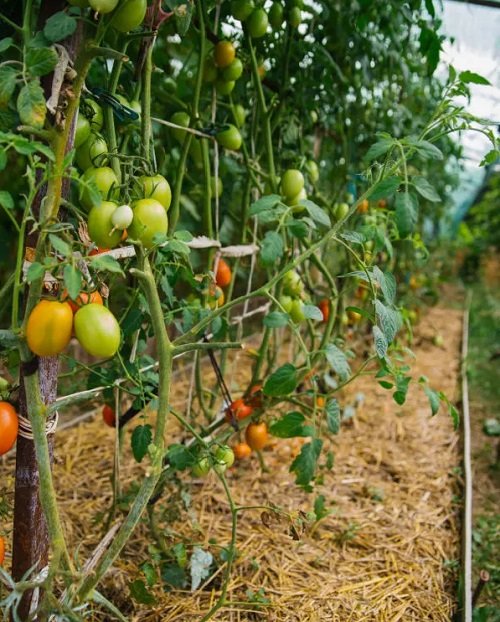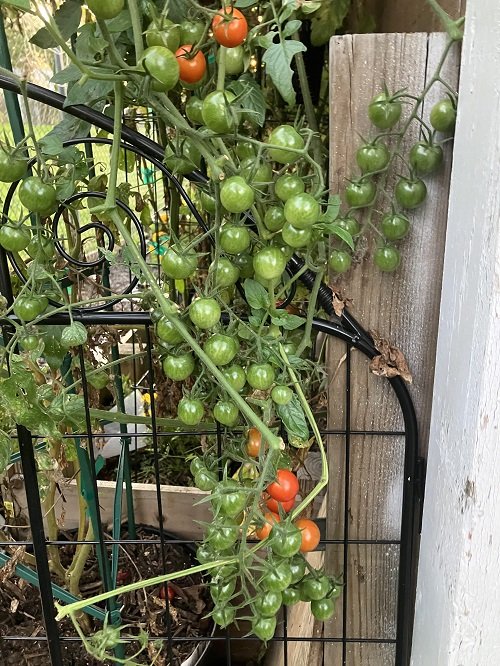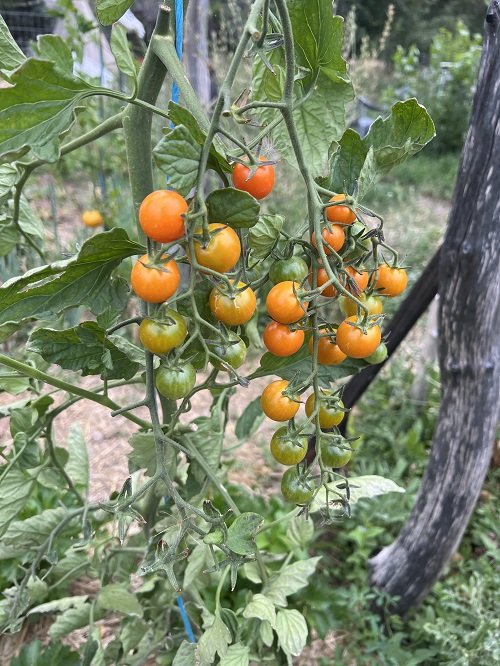You’ve Been Growing Tomatoes All Wrong Before! But worry not—here are some expert practices for growing the best ones!
If you feel like an expert in growing tomatoes, we have curated some fantastic tips that will take your harvesting game to the next level!
You’ve Been Growing Tomatoes All Wrong Before! This Is How It Should Be!
1. Prune Tomato Suckers
When your tomato plants grow, you will observe little stems sprouting from where larger branches connect to the main stem. This is what we call “suckers,” which are known to drain a lot of energy and nutrients from the plant.
You just need to pinch them off so that your plant uses all the energy to grow those juicy tomatoes!
2. Plant Your Tomatoes Deeper
When you plant your tomato deeply, the roots will propagate from that main stem. This will keep your tomato plant from getting leggy and flipping over.
Som what’s the ideal length and method? Bury 2/3 of the main stem of the tomato plant, which can be anywhere between 6-8 inches for most plants. Do make sure that the bottom leaves stay above the soil surface.
This depth is great to give the right support, while enhancing the plant’s ability to absorb nutrients and water in a much better manner.
3. Get Rid of Dead and Damaged Leaves

When you know the dead and damaged leaves do no good to your tomato plant, why not eliminate them? Keeping the old leaves on can drain your plant of valuable energy, which it can use to grow the best tomatoes.
The best part? You can actually make out the troubles of the plant while having a look at the foliage! Here’s how:
- Upward curling leaves indicate too much light exposure and inadequate watering.
- Downward curling foliage shows overwatering and exposure to high humidity.
- Black or brown spots on the leaves are a sign of early blight (caused by Alternaria solani) or late blight (Phytophthora infestans).
- Yellow spots show the signs of bacterial infection.
- White spots mean the plant is suffering from powdery mildew.
- Very fine brown or black spots on the leaves are an indication of fungal infections like Septoria leaf spot.
- Very fine yellow or white dots along with webbing is a sign of spider mites.
4. Rotate Your Tomatoes To Ensure they Get Even Sunlight
Six hours of direct sunlight is a MUST for tomatoes, but they will grow best in seven to eight hours of sunlight. Rotation of the plant can be done when growing it in a pot. Simply turn it every 2-3 days to ensure every part gets the right sun exposure.
5. Mulching is Good
Mulching is the easiest way to bless your tomatoes with multiple benefits. All you need to do is spread a layer of it across the soil surface to prevent soil moisture from evaporating too quickly.
Your tomatoes will grow better and healthier because the soil underneath is under less strain due to mulch cover. It will also help to block weeds from germinating and stealing soil nutrients away from your plant.
6. Amend The Soil
Soil plays a vital role in growing veggies, including tomatoes. If you grow in containers, you can use many pre-made potting mixes available online. You can also make your own by combining vermiculite and peat moss with soil.
Go for a soil test to determine if any nutrients are lacking or if the pH level is slightly off. Ensure that your soil is slightly acidic, with a pH between 6.5 and 6.8. You can also add compost and other sources of organic matter to supply nutrients for a good tomato crop.
8. Air Circulation is Important
Air circulation is good for the development of stronger stems. Pick a spot that’s not hindered by trees and other plants. Also, make sure there’s at least 2-3 feet of open space all around the plant.
9. Plant at the Right Time
Tomatoes are summer-season vegetables, which are usually grown as summer annuals. If you are growing the seeds indoors, you must start between March and June.
Plant tomatoes outdoors once any danger of frost has passed and ensure soil temperatures are at least 60 degrees Fahrenheit (15°C). It’s best to wait to plant tomatoes outdoors until nighttime temperatures stay above 50 degrees Fahrenheit (10°C).
10. Water Deeply
Ensure to implement the deep watering practice while the fruits are developing. You must ensure your plants get 1 to 1 1/2 inches of water weekly. During the hot and dry season, if you notice wilting tomatoes, give them some more water than others.
Water at the base of the plant while avoiding splashing water on the leaves, which can lead to disease. When you see that the fruit is beginning to ripen, ease up on watering so the plant concentrates its sugars for a better-tasting fruit.
11. Don’t Grow Tomatoes in the Same Spot
Planting tomatoes in the same place year after year can be risky. Over time, disease spores and pests that love tomatoes can build up in the soil. These can then easily infect your new tomato plants, making them unhealthy and reducing your harvest.
It’s better to switch things up and plant tomatoes in a new spot every few years. That’s why you should also rotate the crops, as we explained above.
12. Save Them from Leaf Miners and Whiteflies
Leaf miners are small flies that lay eggs on the underside of leaves. Once they hatch, the larvae burrow inside the leaf, creating winding tunnels as they feed, stunting the tomato’s ability to photosynthesize, which can cause the leaves to turn yellow and wither.
Whiteflies, on the other hand, are winged insects that suck the sap out of leaves. This weakens the plant and takes a toll on its health.
For both pests, try using insecticidal soap sprays or neem oil. They’ll work for both young and adult pests and won’t harm your plants in the process.






